Yilin Niu
Does RLHF Scale? Exploring the Impacts From Data, Model, and Method
Dec 08, 2024
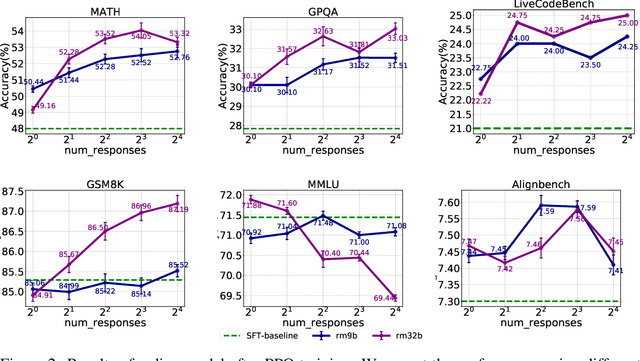
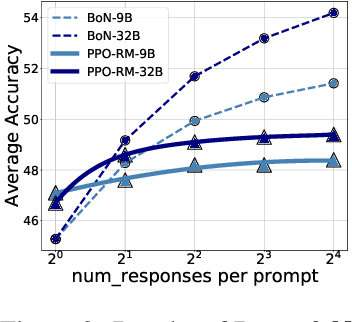
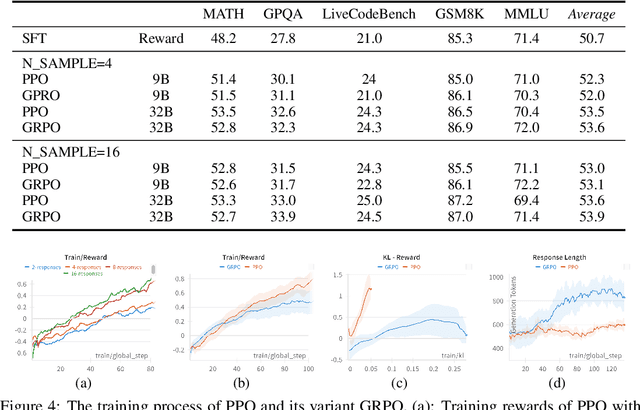
Abstract:This study explores the scaling properties of Reinforcement Learning from Human Feedback (RLHF) in Large Language Models (LLMs). Although RLHF is considered an important step in post-training of LLMs, its scaling potential is still largely unknown. We systematically analyze key components in the RLHF framework--model size, data composition, and inference budget--and their impacts on performance. Our findings show that increasing data diversity and volume improves reward model performance, helping process-supervision models scale better. For policy training, more response samples per prompt boost performance initially but quickly plateau. And larger reward models offer modest gains in policy training. In addition, larger policy models benefit less from RLHF with a fixed reward model. Overall, RLHF scales less efficiently than pretraining, with diminishing returns from additional computational resources. Based on these observations, we propose strategies to optimize RLHF performance within computational limits.
LongReward: Improving Long-context Large Language Models with AI Feedback
Oct 28, 2024Abstract:Though significant advancements have been achieved in developing long-context large language models (LLMs), the compromised quality of LLM-synthesized data for supervised fine-tuning (SFT) often affects the long-context performance of SFT models and leads to inherent limitations. In principle, reinforcement learning (RL) with appropriate reward signals can further enhance models' capacities. However, how to obtain reliable rewards in long-context scenarios remains unexplored. To this end, we propose LongReward, a novel method that utilizes an off-the-shelf LLM to provide rewards for long-context model responses from four human-valued dimensions: helpfulness, logicality, faithfulness, and completeness, each with a carefully designed assessment pipeline. By combining LongReward and offline RL algorithm DPO, we are able to effectively improve long-context SFT models. Our experiments indicate that LongReward not only significantly improves models' long-context performance but also enhances their ability to follow short instructions. We also find that long-context DPO with LongReward and conventional short-context DPO can be used together without hurting either one's performance.
ChatGLM: A Family of Large Language Models from GLM-130B to GLM-4 All Tools
Jun 18, 2024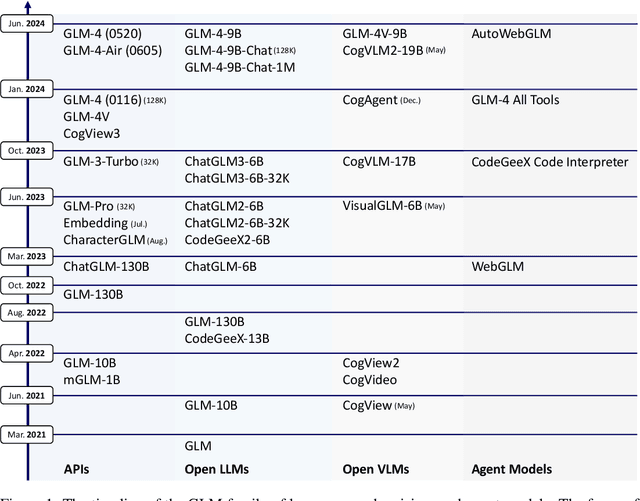
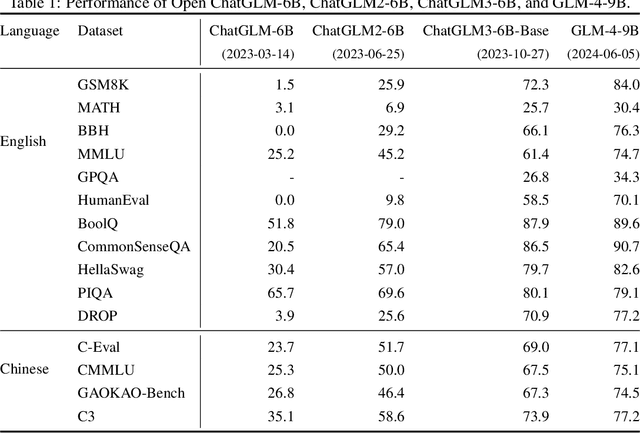
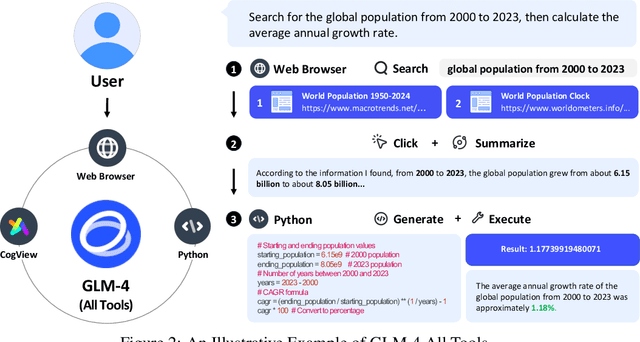
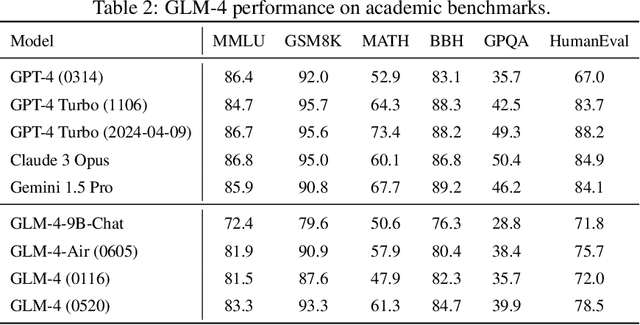
Abstract:We introduce ChatGLM, an evolving family of large language models that we have been developing over time. This report primarily focuses on the GLM-4 language series, which includes GLM-4, GLM-4-Air, and GLM-4-9B. They represent our most capable models that are trained with all the insights and lessons gained from the preceding three generations of ChatGLM. To date, the GLM-4 models are pre-trained on ten trillions of tokens mostly in Chinese and English, along with a small set of corpus from 24 languages, and aligned primarily for Chinese and English usage. The high-quality alignment is achieved via a multi-stage post-training process, which involves supervised fine-tuning and learning from human feedback. Evaluations show that GLM-4 1) closely rivals or outperforms GPT-4 in terms of general metrics such as MMLU, GSM8K, MATH, BBH, GPQA, and HumanEval, 2) gets close to GPT-4-Turbo in instruction following as measured by IFEval, 3) matches GPT-4 Turbo (128K) and Claude 3 for long context tasks, and 4) outperforms GPT-4 in Chinese alignments as measured by AlignBench. The GLM-4 All Tools model is further aligned to understand user intent and autonomously decide when and which tool(s) touse -- including web browser, Python interpreter, text-to-image model, and user-defined functions -- to effectively complete complex tasks. In practical applications, it matches and even surpasses GPT-4 All Tools in tasks like accessing online information via web browsing and solving math problems using Python interpreter. Over the course, we have open-sourced a series of models, including ChatGLM-6B (three generations), GLM-4-9B (128K, 1M), GLM-4V-9B, WebGLM, and CodeGeeX, attracting over 10 million downloads on Hugging face in the year 2023 alone. The open models can be accessed through https://github.com/THUDM and https://huggingface.co/THUDM.
ChatGLM-RLHF: Practices of Aligning Large Language Models with Human Feedback
Apr 03, 2024Abstract:ChatGLM is a free-to-use AI service powered by the ChatGLM family of large language models (LLMs). In this paper, we present the ChatGLM-RLHF pipeline -- a reinforcement learning from human feedback (RLHF) system -- designed to enhance ChatGLM's alignment with human preferences. ChatGLM-RLHF encompasses three major components: the collection of human preference data, the training of the reward model, and the optimization of policies. Throughout the process of integrating ChatGLM-RLHF into production, we encountered and addressed several unprecedented challenges. We introduce the strategies to mitigate reward variance for stabilized large-scale training, implement model parallelism with fused gradient-descent, and design regularization constraints to avoid catastrophic forgetting in LLMs. Experiments show that ChatGLM-RLHF brings significant improvements in alignment tasks compared to the supervised fine-tuned (SFT) version of ChatGLM. For instance, it achieves on average 15\% more wins against ChatGLM-SFT in Chinese alignment tasks. The work presents our practices of aligning LLMs with human preferences, offering insights into the challenges and solutions in RLHF implementations.
Towards Efficient and Exact Optimization of Language Model Alignment
Feb 02, 2024Abstract:The alignment of language models with human preferences is vital for their application in real-world tasks. The problem is formulated as optimizing the model's policy to maximize the expected reward that reflects human preferences with minimal deviation from the initial policy. While considered as a straightforward solution, reinforcement learning (RL) suffers from high variance in policy updates, which impedes efficient policy improvement. Recently, direct preference optimization (DPO) was proposed to directly optimize the policy from preference data. Though simple to implement, DPO is derived based on the optimal policy that is not assured to be achieved in practice, which undermines its convergence to the intended solution. In this paper, we propose efficient exact optimization (EXO) of the alignment objective. We prove that EXO is guaranteed to optimize in the same direction as the RL algorithms asymptotically for arbitary parametrization of the policy, while enables efficient optimization by circumventing the complexities associated with RL algorithms. We compare our method to DPO with both theoretical and empirical analyses, and further demonstrate the advantages of our method over existing approaches on realistic human preference data.
A Semantic-based Method for Unsupervised Commonsense Question Answering
May 31, 2021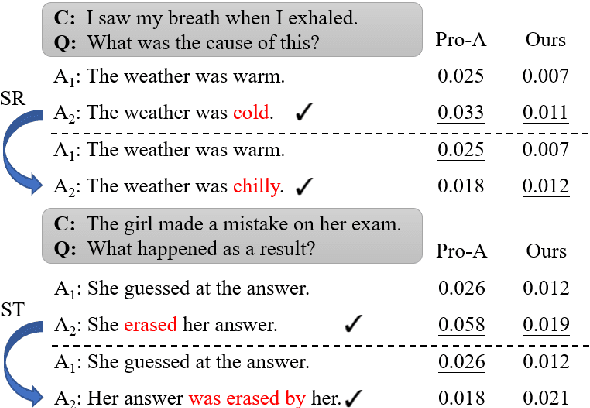
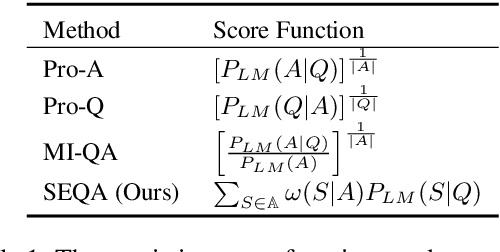
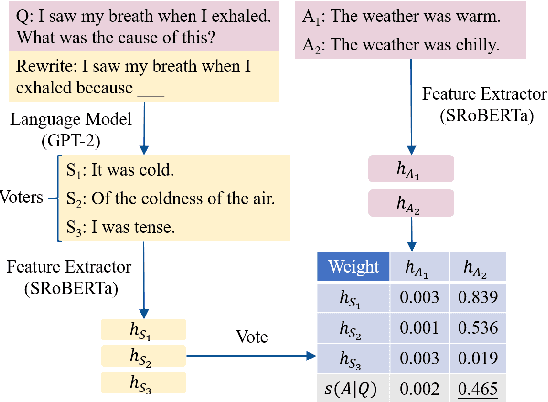
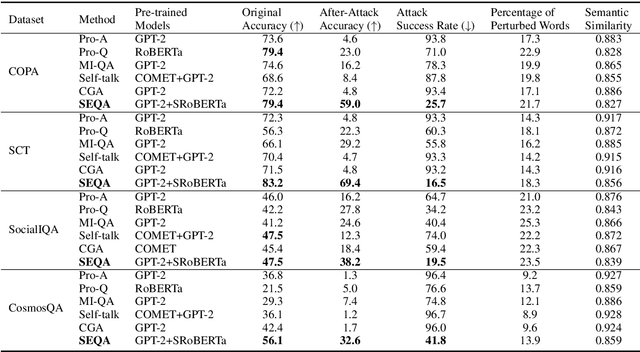
Abstract:Unsupervised commonsense question answering is appealing since it does not rely on any labeled task data. Among existing work, a popular solution is to use pre-trained language models to score candidate choices directly conditioned on the question or context. However, such scores from language models can be easily affected by irrelevant factors, such as word frequencies, sentence structures, etc. These distracting factors may not only mislead the model to choose a wrong answer but also make it oversensitive to lexical perturbations in candidate answers. In this paper, we present a novel SEmantic-based Question Answering method (SEQA) for unsupervised commonsense question answering. Instead of directly scoring each answer choice, our method first generates a set of plausible answers with generative models (e.g., GPT-2), and then uses these plausible answers to select the correct choice by considering the semantic similarity between each plausible answer and each choice. We devise a simple, yet sound formalism for this idea and verify its effectiveness and robustness with extensive experiments. We evaluate the proposed method on four benchmark datasets, and our method achieves the best results in unsupervised settings. Moreover, when attacked by TextFooler with synonym replacement, SEQA demonstrates much less performance drops than baselines, thereby indicating stronger robustness.
REPT: Bridging Language Models and Machine Reading Comprehension via Retrieval-Based Pre-training
May 18, 2021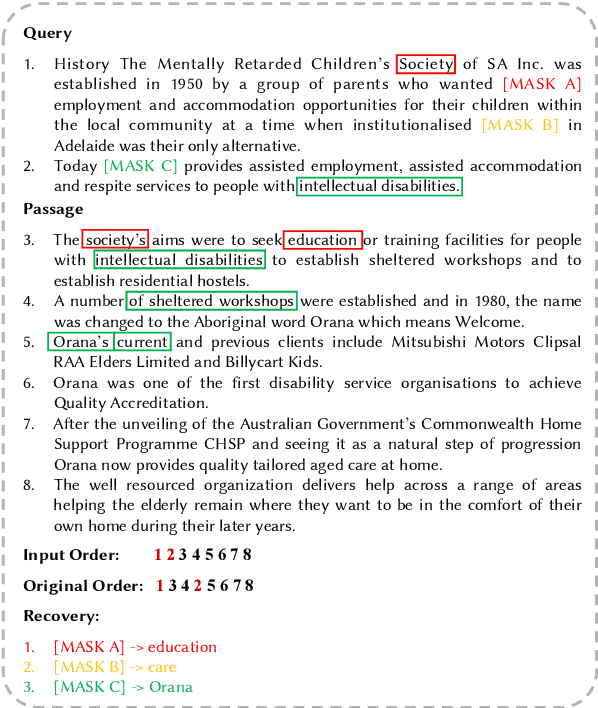
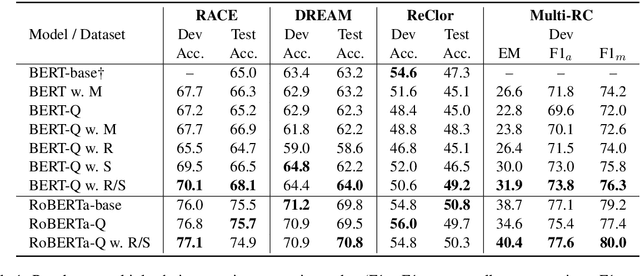
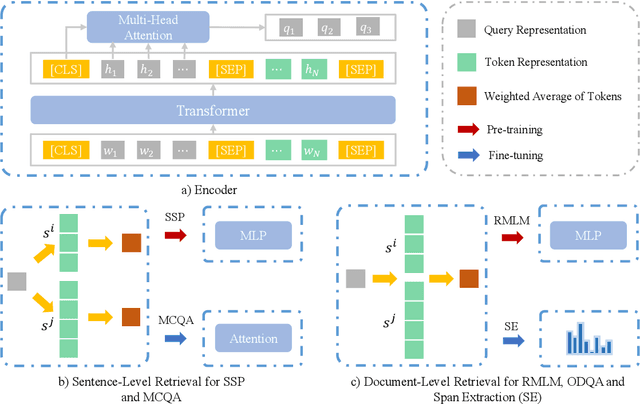
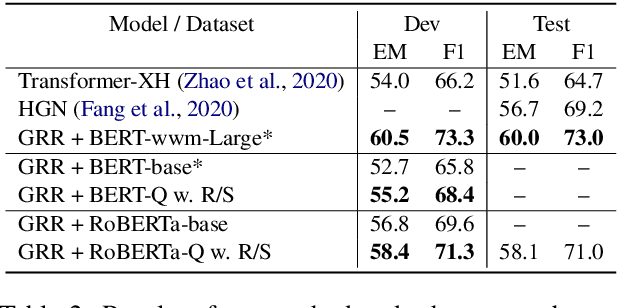
Abstract:Pre-trained Language Models (PLMs) have achieved great success on Machine Reading Comprehension (MRC) over the past few years. Although the general language representation learned from large-scale corpora does benefit MRC, the poor support in evidence extraction which requires reasoning across multiple sentences hinders PLMs from further advancing MRC. To bridge the gap between general PLMs and MRC, we present REPT, a REtrieval-based Pre-Training approach. In particular, we introduce two self-supervised tasks to strengthen evidence extraction during pre-training, which is further inherited by downstream MRC tasks through the consistent retrieval operation and model architecture. To evaluate our proposed method, we conduct extensive experiments on five MRC datasets that require collecting evidence from and reasoning across multiple sentences. Experimental results demonstrate the effectiveness of our pre-training approach. Moreover, further analysis shows that our approach is able to enhance the capacity of evidence extraction without explicit supervision.
A Self-Training Method for Machine Reading Comprehension with Soft Evidence Extraction
May 11, 2020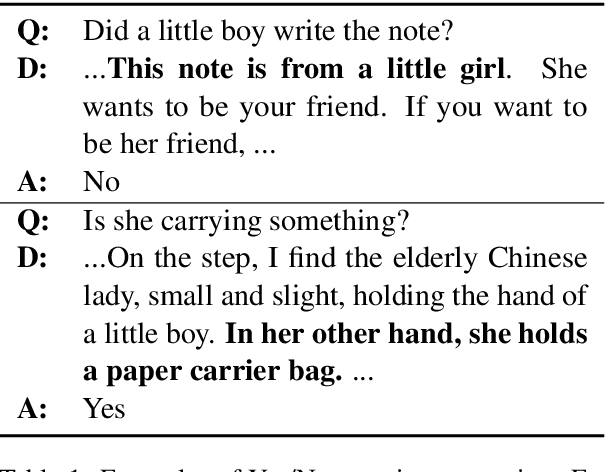
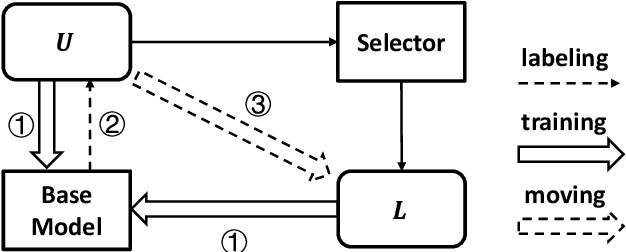


Abstract:Neural models have achieved great success on machine reading comprehension (MRC), many of which typically consist of two components: an evidence extractor and an answer predictor. The former seeks the most relevant information from a reference text, while the latter is to locate or generate answers from the extracted evidence. Despite the importance of evidence labels for training the evidence extractor, they are not cheaply accessible, particularly in many non-extractive MRC tasks such as YES/NO question answering and multi-choice MRC. To address this problem, we present a Self-Training method (STM), which supervises the evidence extractor with auto-generated evidence labels in an iterative process. At each iteration, a base MRC model is trained with golden answers and noisy evidence labels. The trained model will predict pseudo evidence labels as extra supervision in the next iteration. We evaluate STM on seven datasets over three MRC tasks. Experimental results demonstrate the improvement on existing MRC models, and we also analyze how and why such a self-training method works in MRC.
CoTK: An Open-Source Toolkit for Fast Development and Fair Evaluation of Text Generation
Feb 03, 2020



Abstract:In text generation evaluation, many practical issues, such as inconsistent experimental settings and metric implementations, are often ignored but lead to unfair evaluation and untenable conclusions. We present CoTK, an open-source toolkit aiming to support fast development and fair evaluation of text generation. In model development, CoTK helps handle the cumbersome issues, such as data processing, metric implementation, and reproduction. It standardizes the development steps and reduces human errors which may lead to inconsistent experimental settings. In model evaluation, CoTK provides implementation for many commonly used metrics and benchmark models across different experimental settings. As a unique feature, CoTK can signify when and which metric cannot be fairly compared. We demonstrate that it is convenient to use CoTK for model development and evaluation, particularly across different experimental settings.
Word Embedding based Edit Distance
Oct 25, 2018
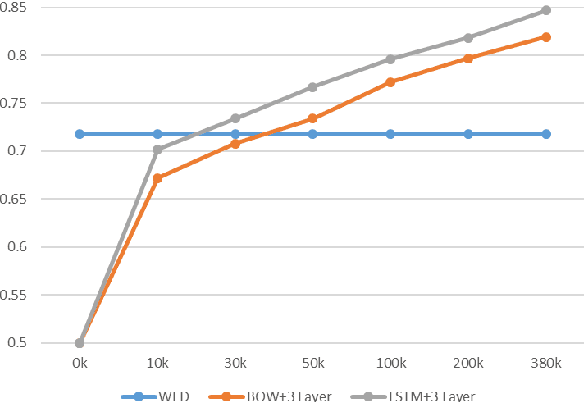

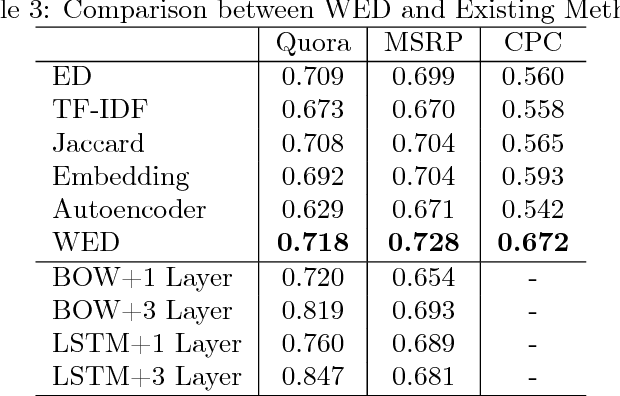
Abstract:Text similarity calculation is a fundamental problem in natural language processing and related fields. In recent years, deep neural networks have been developed to perform the task and high performances have been achieved. The neural networks are usually trained with labeled data in supervised learning, and creation of labeled data is usually very costly. In this short paper, we address unsupervised learning for text similarity calculation. We propose a new method called Word Embedding based Edit Distance (WED), which incorporates word embedding into edit distance. Experiments on three benchmark datasets show WED outperforms state-of-the-art unsupervised methods including edit distance, TF-IDF based cosine, word embedding based cosine, Jaccard index, etc.
 Add to Chrome
Add to Chrome Add to Firefox
Add to Firefox Add to Edge
Add to Edge